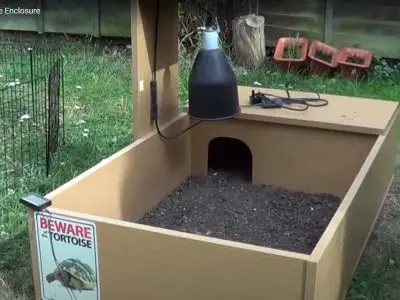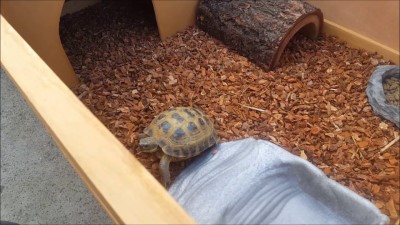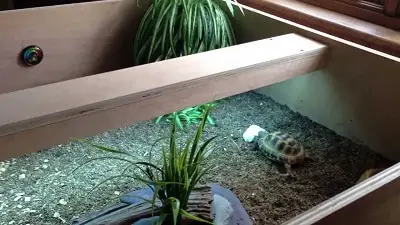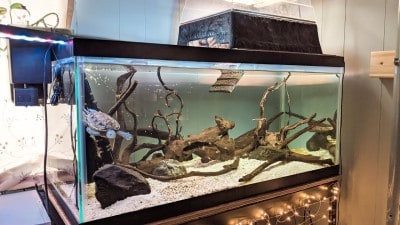Jumping spiders may not be the typical pets you will find in everyone’s home, but the tables are slowly turning as more people are open to keeping and finding out more about them. For this ultimate jumping spider’s guide, we will tell you the upsides and downsides of owning one, how much they usually cost, and how to care for them.

Are Jumping Spiders Good Pets? Pros and Cons You Should Know
As a beginner, it is essential to know what to expect. Knowing the good, bad, and the ugly will make your journey as a spider parent smooth sailing. Let’s look at both sides of the spectrum.
Pros
In the wild, jumping spiders are brutal predators but when placed with humans, they are friendly, shy, and harmless. Read on for more pros.
- Maintenance
Spiders are one of the easiest pets to maintain. It is even cheaper if you catch one on your own because, unlike their counterparts from particular climates, you won’t need to provide heat or have the right humidity level. They are hardy and adapt well to any environment, and you are good to go as long as you provide a cozy enclosure and their daily needs.
- Space
Since jumping spiders are tiny pets, you won’t need to go all out on housing. You can set aside adequate space for them in a small terrarium, jar, or tank and place it on a tabletop. These spiders are adventurous and may need a high enclosure, but they will not take up much room.
- Entertainment
You will never get bored with these pets around because all spiders are pretty fascinating. From their web building, hunting, and adorable faces, it will be fun to take pictures or stare at them. You will also learn more about a spider’s daily life from them as you spend more time together.
Cons
However, they also come with their cons.
- Bites
The most significant concern among first-time spider owners is that they are afraid of spider bites and venom. Jumping spiders, like most animals, have to defend themselves when they believe that their lives are in danger. Therefore, if you handle them roughly, they may bite as a defense mechanism.
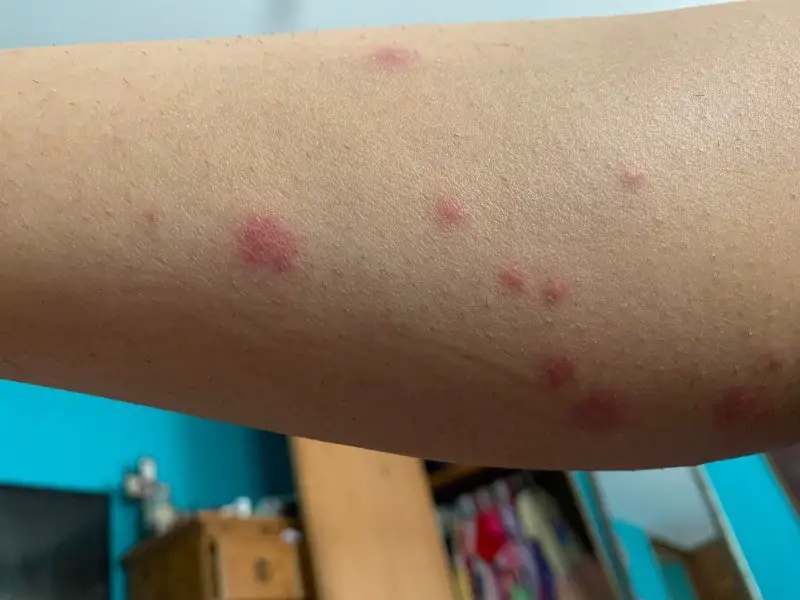
These bites can be painful, lead to swelling, and irritation, and, maybe severe, especially if you are allergic. The good news is, they may ease into your hold if you are calm when handling them. Otherwise, you can wear gloves and other protective gear when holding them for the first time.
Read more about Do Jumping Spiders Bite,
- Lifespan
Generally, jumping spiders have a short lifespan. They may only work for you if you are not very keen on a lifetime companion. If you take great care of them and all factors stay constant, the females may reach three years.
- Escaping
Most spiders love to explore, and the jumping species are infamous for that, thanks to their flight skill. Therefore, it is advisable to be extra careful when handling them because they can easily escape and get hurt in the process, especially when you have other pets in the house.
Read more about Are Spiders Good Pets.
Best Jumping Spider Species As Pets (and Lifespan)
There are hundreds of jumping spider species in the wild. We have selected the most common types you will find among keepers alongside their qualities, behaviors, and lifespan.
- Tan Jumping Spider
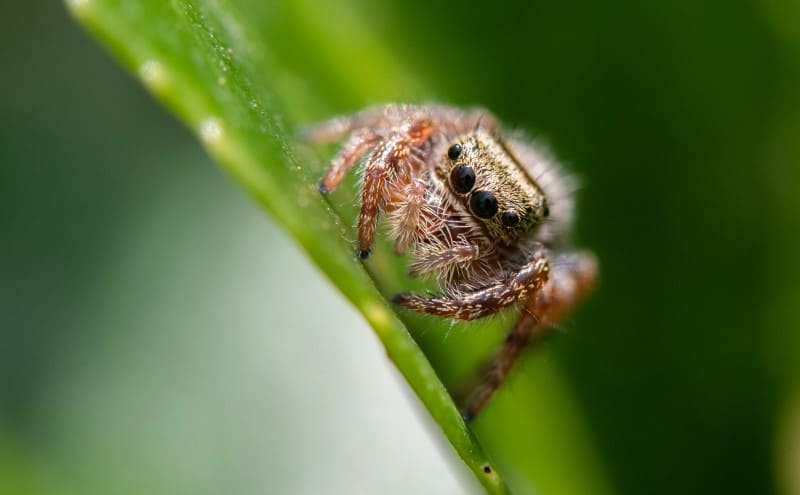
These spiders are famous for their tan color, and you will likely find them in the US or Canada. The first thing you will notice is the primary orange body parts from which they derive the name. They love earthworms and small crickets and are comfortable under a human touch. If you take good care of them, they can live for around a year.
- Regal Jumping Spider
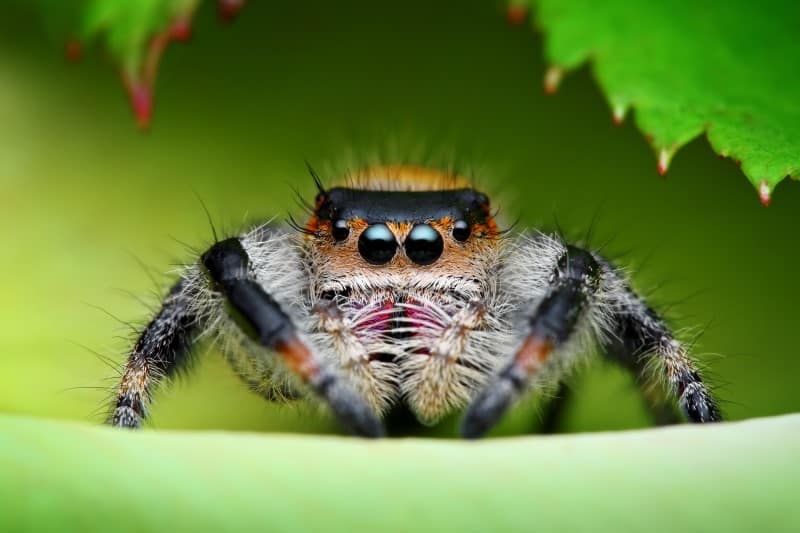
This species has the highest population among jumping spiders. They mostly live in the eastern part of the country, and you will find them in the wild or on building walls. The males have white patterns on their bodies against a black base, while the females range from bright orange to gray hues. They enjoy spinning webs and resting on them and have an average lifespan of approximately ten months.
- Bold Jumping Spider
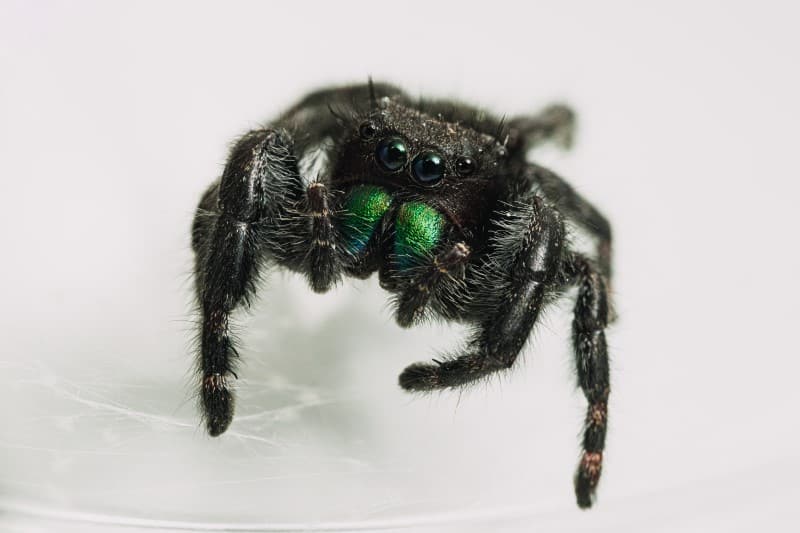
Also known as the daring spider, this species is famous for its outgoing personality. It doesn’t shy away from other species unless they face their deadly predators like birds and lizards. You will identify them by their black color and the prominent greenish and bluish fangs. They indulge in worms and other smaller spiders and are one of the long-living species with a lifespan of two years.
- Other Species
Besides the three, other rare jumpers also make great pets. We have the shiny, heavy, elegant golden, and zebra jumping spiders. They are all adorable, and you can only find them in the fields in Myanmar, China, Singapore, Vietnam, India, the Philippines, Malaysia, and Sri Lanka. You may also find them in pet stores or online shops, but they are not readily available and can be pretty pricey. Such species can live for six months to three years, depending on their sex, care, and maintenance.
Pet Jumping Spiders Cost Breakdown
| Product | Cost |
| Your Jumping Spider | $10 – $30 |
| Enclosure | $0 – $30 |
| Substrate | $5 – $10 |
| Decorative | $20 |
| Accessories | $10 – $30 |
| Food | $50 – $100 Yearly |
Compared to most exotic pets, it is relatively cheaper to own a jumping spider. Given that they are tiny, you can build a house for them instead of purchasing one. Besides, if there is a high population in your area and there’s no state law prohibiting their capture, you can still find one in the wild. You can also cultivate live food for them to cut on feeding costs. However, if you wish to buy one and other related items, here’s a price breakdown.
Initially, buying a pet spider from a store may cost you $10-$30 depending on your area and how easy it is to find one; it may be cheaper if your region has a high jumping spider population. The second item to spend on is the spiders’ housing and decorative items. Choosing a terrarium may cost around $20-$30, depending on the size and design, but for cost-saving, you can use a sizable and well-ventilated jar.
If you want your pet to be more comfortable, you can buy a substrate at around $7 and other decorative pieces such as barks, twigs, and leaves at about $20. You can also pick these items from your backyard for a more realistic look. The next item to consider is the food. They primarily feed on live meals such as crickets and worms, which are readily available from stores.
Mealworms go for around $13, while crickets cost approximately $30, according to the portions. Such purchases can last months, depending on how many spiders you have. The upkeep and initial cost for these pets are manageable since all you need is their meal and water. Ultimately, if you have around $60, you will be ready to purchase and take care of your jumping spider for a couple of months.
Jumping Spider Enclosure Setup
Jumping spiders have a low maintenance cost. They are tiny and don’t need additional requirements such as lighting and heating. For their home, all they need is a cozy and airy container. It just has to be away from direct sunlight to avoid it from overheating. They can get a little warmth when the sun isn’t too strong depending on the prevailing temperatures in your home. If you have a tiny pet, you can pick a small airy, glass, or plastic container.

If you want a glass enclosure that can serve as décor, you can go for this glass terrarium. The glass material is see-through, and your pet will have plenty of room to jump, exercise, and breed. Additionally, it is vital to let it out once in a while for a few minutes, to pet it so that it can get used to your touch, and to inspect it. Without exercise, your pet may get weak and stressed, leading to an early death. If you have a tiny jumper, you don’t have to go for an expensive or fancy tank. You can find a ventilated container with enough room to mimic their natural setup. We advise a cubic foot tank for a mini spider, which translates to around 7 gallons.
Ensure that the tank has a lid to prevent them from escaping. This spider container will work great for you if you have a miniature spider. Alternatively, you can go for a bigger tank like this one from amazon. They are well-ventilated with a feeding window and a handle for easy transportation.
Other Accessories You Need
While some keepers would rather have a plain tank for their spiders, others prefer additional items to make their pet’s home look more natural. The first item to consider is the substrate. It is the item you place at the bottom of the enclosure for your spider to walk on to provide friction and to make the tank easier to clean. However, in most cases, the jumping spider spends more time on the walls or at the top of the tank.
The substrate’s primary influence is making their home look natural and attractive, especially if the walls are see-through. You can purchase one from online shops. Your spider may also need additional decorative items for them to play with or serve as hideouts when they get scared. We recommend this forest branch from amazon for them to climb as they exercise. Adding items to the tank not only gives it a natural look but also makes your pet more comfortable.
Food and Drinks
Food is essential to every living organism for better health and happy living. Your jumping spider needs the best food type for growth and general development. In this section, we look at the best meals and drinks to provide your pet.
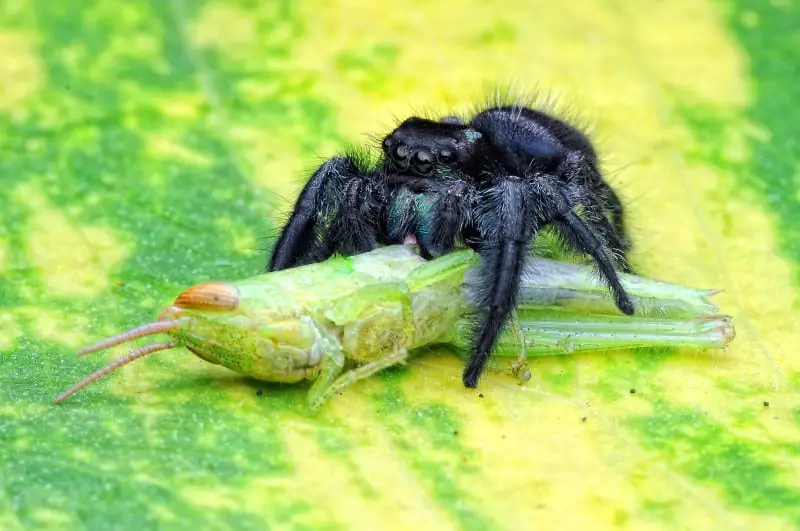
Fruit Flies
Beginners who want to start with their pets as hatchlings should opt for fruit flies as the primary food source. It is a feasible diet because they are tiny creatures since they are harmless, nutritious, and easy to rear at home, saving you on cost.

You can also obtain them from a dealer if you cannot breed them yet because it is still affordable to purchase. However, once your pet spider grows, it is critical to avoid feeding them fruit flies and introduce them to bigger prey.
Blue and Green Bottle Flies
Flies are a spiders’ ideal snack, and they make the top choice. The blue and green bottles are common flies they prefer and are easy to preserve and safe for them even during molting. Although you cannot rear the tasty treats for them, they are readily available at most pet shops online or at physical dealers near you. The flies come as pupae or spikes and are both great meals for your pet as a beginner.
The pupae will then hatch in a few days. You can place them in a fridge for hours to immobilize them, giving you an easy time when serving them. You can buy and feed the spiders the spikes directly or acquire them in bulk and keep them alive for weeks as you provide them in bits. They are ideal for a beginner because they can stay fresh for long. You will only need to soak a towel in warm water mixed with sugary foods for such a meal, then place them in the fridge but be careful not to freeze them to death.
Mealworms
Mealworms are another common food source for jumping spiders. You can find them at pet stores and shops at an affordable price, but you can also breed them at home.

They are better as supplements due to their high protein levels. You can drop a few in the spider’s enclosure every week, making sure that they don’t get too much of it. Note that if you leave a mealworm in the cage for long, it may overgrow, posing a grave threat to the spider.
Roaches
There are various roach species available, and some make the best diet for your jumper. Before you decide to feed your buddy some roaches, it is best to consult to know which one is ideal for feeding. This spider food is easy to keep alive and won’t give you a hard time rearing as a beginner.

Unfortunately, some roaches may be more intimidating; therefore, place a sizable one in the enclosure and only add more if your pet has devoured the previous one.
Crickets
These creatures are another favorite treat for jumping spiders since they are highly nutritious and readily available when in the wild. You can raise them as feeders or purchase them from pet stores.

However, avoid giving the spiders giant crickets; it is best to provide the tiny ones or those of the same size. It is advisable to kill the prey before serving to avoid fatalities for sick jumping spiders, spiderlings, or those undergoing molting.
Water
Water is vital for digestion, and the spiders will need it after their meals. You can spray their enclosure to make their home moist and humid to keep them hydrated. Ideally, owners use spray bottles before, during, or after feeding. Beginners are often uncertain of the best type of water to feed their pets. Some keepers state their spiders use tap water without complications. However, we usually advocate for a distilled alternative because it is chemical-free and won’t cost much since your pet doesn’t need a lot of it.
Read more about Where to Buy Feeders.
Pet Jumping Spider Care Sheet
| Name | Jumping Spider |
| Size | 12mm in males /15mm in females |
| Lifespan | Less than 1 year on average |
| Temperature | 70- 85°F |
| Feeding | Every 2-3 days |
| Water | Spraying water daily |
Like any other pet, the jumping spider also needs excellent care. Experts recommend feeding them once or twice a week, depending on the age, species, and sex. The arachnids’ home should be made of enclosed, well-aerated glass, or acrylic material. Such a design prevents prey from climbing out, ventilates the room, and prevents them from escaping. Additionally, jumping spiders don’t web like other species, and beginners find it challenging to provide the appropriate substrate.
Therefore, it is best to find a cozy, smooth and safe substance to use, preferably one with a more natural look for them to feel more comfortable. It is also best to occasionally moisten the enclosure by sprinkling water using a spray bottle. We don’t recommend using a sponge since the material can carry certain harmful bacteria. Moreover, spending some quality time with your buddy will keep them active and sharpen their hunting skills as they get to know you better.
Avoid feeding the jumper giant insects, especially mature crickets, because they may attack and cause severe injuries to your pet. Lastly, the ideal temperatures should range between 70- 85°F. Hence, it is advisable to keep the cage away from sunlight to prevent overheating and harming your pet in the process.
Handling Your Jumping Spider
Jumping spiders are a giant spider species that you can handle calmly without fear of being bitten. In the rare case that it happens, you can expect mild pain but nothing serious because they don’t have venom. Jumping spiders are not big fans of frequent handling; however, you can touch them occasionally when petting to establish trust. You can spend a few minutes a day letting them crawl over your hand. While handling it on your hand is fun and brings a sense of companionship, it also comes with its risks.
If you are still skeptical about spiders, it is best to use protective gear because spiders can sense that something is wrong when you hold them while trembling. Their first instinct will be that you are a predator, and they will bite to defend themselves. You can use a double layer of gloves for your safety when you need to carry the spider while relocating or petting it. Touch is the quickest way to make the spider more outgoing and friendly with other people. If you do it right while staying calm, it may take the shortest time to bond, and the spider will soon feel comfortable near you.
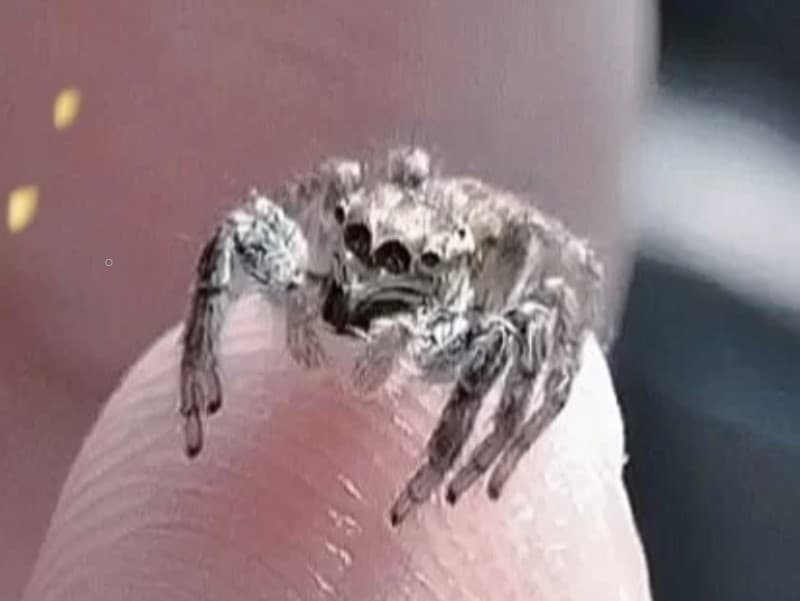
However, some jumpers are pretty stubborn and need more care and attention to make them more friendly. For instance, if they don’t want to reach out to crawl in your hand, you can guide them by placing it close to your open palm and poke its abdomen to nudge it to move forward. Also, be careful of its behavior and avoid frustrating them. If you are a beginner, it is best to be cautious because sometimes the arachnid may be molting, a time when they become quite aggressive.
The best way to handle your spider is to ensure that it is calm. Put the cage on a clean surface with a clear container around in case of anything. Next, open the enclosure and lead the spider into your palm using a stick or a plastic item. Once your buddy is out, be very patient as you allow it more time to process everything. Eventually, it will know that it is safe as it will slowly lower its guard.
Breeding Your Jumping Spider
A mature male jumping spider will mate with the female, who will, in turn, lay eggs after one or three weeks. The eggs range from 50-200 or more depending on the female’s size. Different species have unique traits, especially during courtship, mating, and taking care of hatchlings. Courting usually begins with the male trying to impress the female by paddling tirelessly. The female will not make it easy for him until she finds the one that has won her over.
The male at this time will have sperms in his palps waiting for ejaculation. Once the courtship is successful, he will inject his sperms into the females’ genitals at the lower abdomen. Certain jumping spiders can mate with several males and hold the sperms while waiting for the best male, and the best sperm will fertilize her eggs. As seen with other spider species, the worst moment comes when the female devours her partner. Other suitors who will come later on after successful mating will also be at risk of devouring.

The female spiders will produce an eggs sac containing hundreds of eggs. Some spiders will die after this, while some will stay alive to take care of their hatchlings. The numerous eggs increase survival chances for the spiderlings, making it easy for beginners to rear them, especially if you wish to create a colony.
After a few days, the sac bursts open, and the young ones emerge. Some arachnids will carry their newborns on their back for about ten days before they can separate to each fend for themselves. At this point, you can put the hatchlings in a separate container and start feeding them fruit flies and other tiny insects.
Finally
The jumping spiders are adorable and make terrific pets even for a beginner. They also have unique skill sets that set them apart from other exotic pets. You will also love that they are easy to care for since all they need is a safe and comfortable shelter, food, and water. Their initial and upkeep cost are also relatively low because you can find an affordable setup and feed them crickets or mealworms. Given that they only eat a few times a week, feeding won’t cost you a fortune. Go ahead and purchase one, and you will love being a spider parent.



